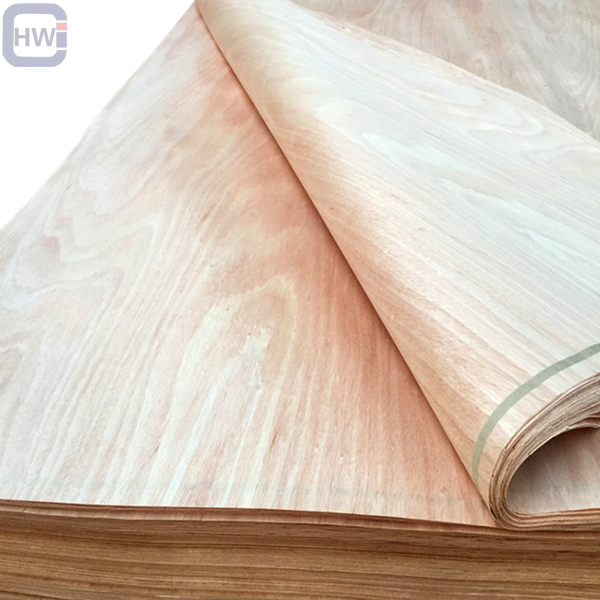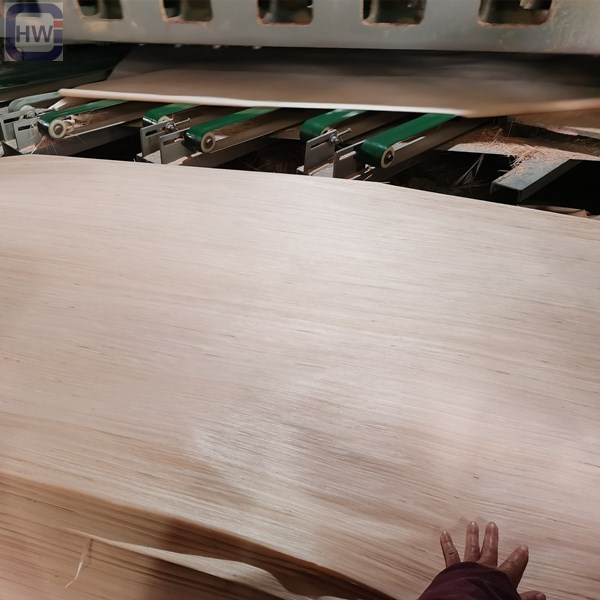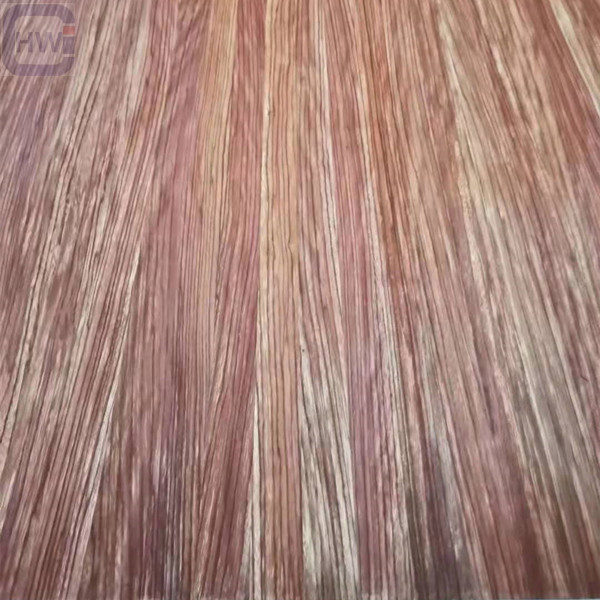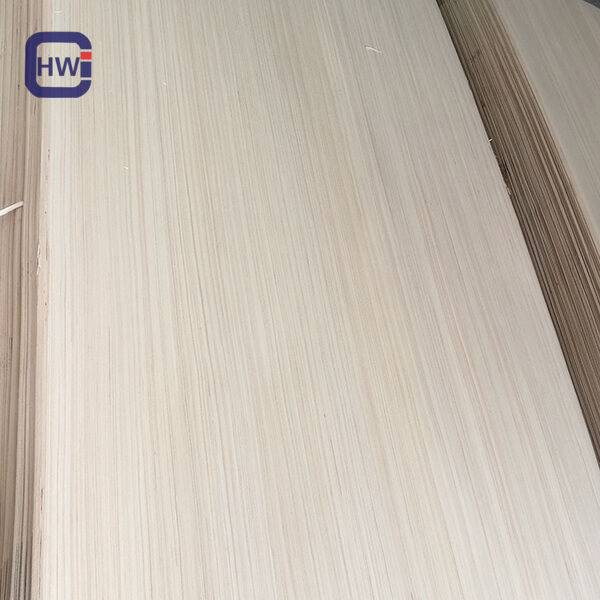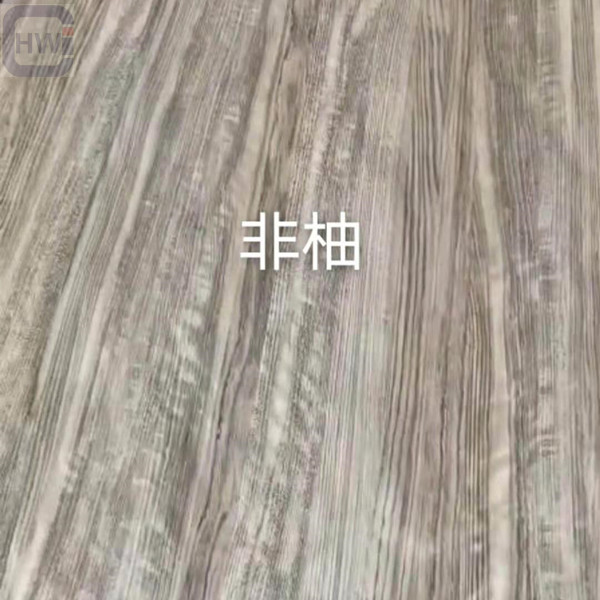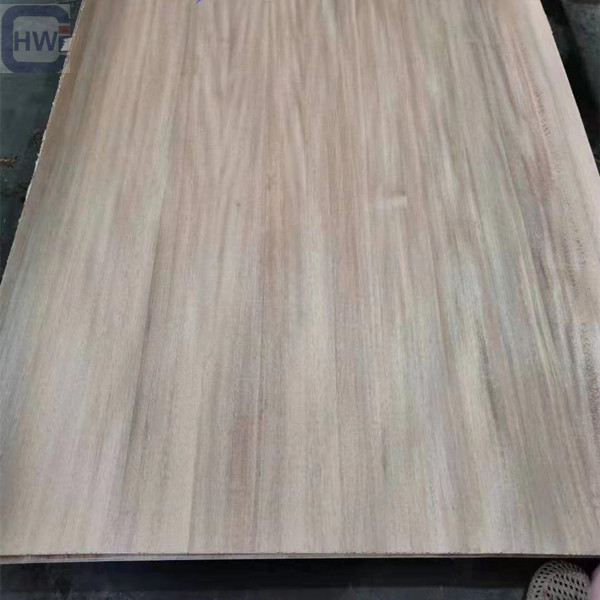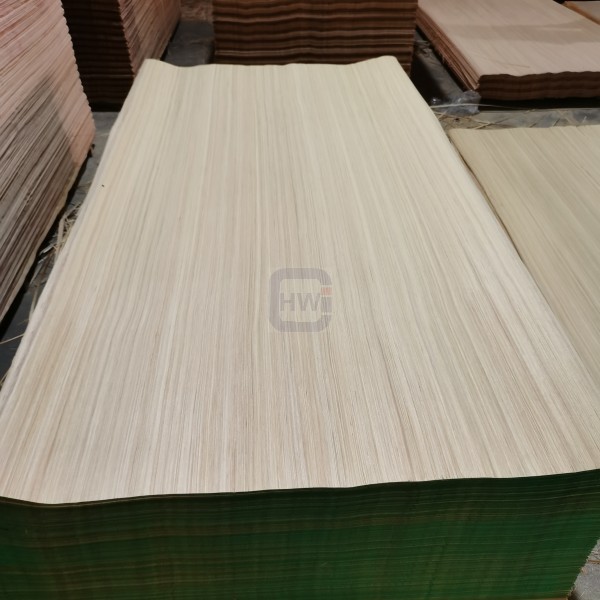Veneer
-
Customizable natural okoume veneer for plywood
Customizable natural okoume veneer
- Loading Quantity: 20’GP-8pallets/22CBM, 40’HQ-14pallets/50CBM
- MOQ: 1X20’FCL
- Supply Ability: 5000CBM/Month
- Payment Terms: T/T or L/C
- Delivery Time: Within 20 days after deposit confirmation
- Certification: CE, FSC, EUTR, CARB,EPA, JAS, ISO
- Material: Okoume Veneer/Rotary Cut Veneer/custom
- Size:1270*2500mm,1270*2200mm, 1270*1900mm,970*200mm, 970*1900mm or customize
- Thickness: 0.15mm-1.5mm
- Moisture Content: <12%
-
Engineered wood veneer/ reconstituted wood veneer/recon veneer
- Loading Quantity: 20’GP-8pallets/22CBM, 40’HQ-14pallets/50CBM
- MOQ: 1X20’FCL
- Supply Ability: 5000CBM/Month
- Payment Terms: T/T or L/C
- Delivery Time: Within 20 days after deposit confirmation
- Certification: CE, FSC, EUTR, CARB,EPA, JAS, ISO
- Material: Sliced Veneer/Engineered Veneer/custom
- Size:1270*2500mm,1270*2200mm, 1270*1900mm,970*200mm, 970*1900mm or customize
- Thickness: 0.15mm-1.5mm
- Glue: E0/E1
- Formaldehyde Release: E0≤0.5mg/L, E1≤1.5mg/L, E2≤5.0mg/L
- Moisture Content: <12%
-
HW Engineered Veneer and Sliced Veneer
- Loading Quantity: 20’GP-8pallets/22CBM, 40’HQ-14pallets/50CBM
- MOQ: 1X20’FCL
- Supply Ability: 5000CBM/Month
- Payment Terms: T/T or L/C
- Delivery Time: Within 20 days after deposit confirmation
- Certification: CE, FSC, EUTR, CARB,EPA, JAS, ISO
- Material: Rotary Veneer/Engineered Veneer/custom
- Size:1270*2500mm,1270*2200mm, 1270*1900mm,970*200mm, 970*1900mm or customize
- Thickness: 0.15mm-1.5mm
- Moisture Content: <12%
-
HW Engineered Wood Veneer, EV, Sliced Veneer
- Loading Quantity: 20’GP-8pallets/22CBM, 40’HQ-14pallets/50CBM
- MOQ: 1X20’FCL
- Supply Ability: 5000CBM/Month
- Payment Terms: T/T or L/C
- Delivery Time: Within 20 days after deposit confirmation
- Certification: CE, FSC, EUTR, CARB,EPA, JAS, ISO
- Material: Rotary Veneer/Engineered Veneer/custom
- Size:1270*2500mm,1270*2200mm, 1270*1900mm,970*200mm, 970*1900mm or customize
- Thickness: 0.15mm-1.5mm
- Glue: E0/E1
- Formaldehyde Release: E0≤0.5mg/L, E1≤1.5mg/L, E2≤5.0mg/L
- Moisture Content: <12%
-
HW Sliced African Teak Veneer
- Loading Quantity: 20’GP-8pallets/22CBM, 40’HQ-14pallets/50CBM
- MOQ: 1X20’FCL
- Supply Ability: 5000CBM/Month
- Payment Terms: T/T or L/C
- Delivery Time: Within 20 days after deposit confirmation
- Certification: CE, FSC, EUTR, CARB,EPA, JAS, ISO
- Material: Rotary Veneer/Engineered Veneer/custom
- Size:1270*2500mm,1270*2200mm, 1270*1900mm,970*200mm, 970*1900mm or customize
- Thickness: 0.15mm-1.5mm
- Moisture Content: <12%
-
HW Sliced Red Rose Veneer
- Loading Quantity: 20’GP-8pallets/22CBM, 40’HQ-14pallets/50CBM
- MOQ: 1X20’FCL
- Supply Ability: 5000CBM/Month
- Payment Terms: T/T or L/C
- Delivery Time: Within 20 days after deposit confirmation
- Certification: CE, FSC, EUTR, CARB,EPA, JAS, ISO
- Material: Rotary Veneer/Engineered Veneer/custom
- Size:1270*2500mm,1270*2200mm, 1270*1900mm,970*200mm, 970*1900mm or customize
- Thickness: 0.15mm-1.5mm
- Moisture Content: <12%
-
HW Walnut Veneer
- Loading Quantity: 20’GP-8pallets/22CBM, 40’HQ-14pallets/50CBM
- MOQ: 1X20’FCL
- Supply Ability: 5000CBM/Month
- Payment Terms: T/T or L/C
- Delivery Time: Within 20 days after deposit confirmation
- Certification: CE, FSC, EUTR, CARB,EPA, JAS, ISO
- Material: Rotary Veneer/Engineered Veneer/custom
- Size:1270*2500mm,1270*2200mm, 1270*1900mm,970*200mm, 970*1900mm or customize
- Thickness: 0.15mm-1.5mm
- Moisture Content: <12%
-
Recon Veneer
- Recon Veneer
- Loading Quantity: 20’GP-8pallets/22CBM, 40’HQ-14pallets/50CBM
- MOQ: 1X20’FCL
- Supply Ability: 5000CBM/Month
- Payment Terms: T/T or L/C
- Delivery Time: Within 20 days after deposit confirmation
- Certification: CE, FSC, EUTR, CARB,EPA, JAS, ISO
- Material: Sliced Veneer/Engineered Veneer/custom
- Size:1270*2500mm,1270*2200mm, 1270*1900mm,970*200mm, 970*1900mm or customize
- Thickness: 0.15mm-1.5mm
- Glue: E0/E1
- Formaldehyde Release: E0≤0.5mg/L, E1≤1.5mg/L, E2≤5.0mg/L
- Moisture Content: <20%
-
Red Face Veneer Decorative Natural Wood
- Loading Quantity: 20’GP-8pallets/22CBM, 40’HQ-14pallets/50CBM
- MOQ: 1X20’FCL
- Supply Ability: 5000CBM/Month
- Payment Terms: T/T or L/C
- Delivery Time: Within 20 days after deposit confirmation
- Certification: CE, FSC, EUTR, CARB,EPA, JAS, ISO
- Material: Okoume Veneer/Rotary Cut Veneer/custom
- Size:1270*2500mm,1270*2200mm, 1270*1900mm,970*200mm, 970*1900mm or customize
- Thickness: 0.15mm-1.5mm
- Moisture Content: <12%

